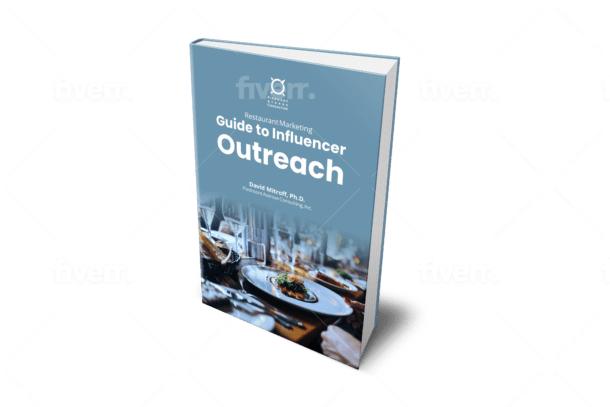Fraud refers to intentionally deceptive activities that aim to exploit victims for unlawful financial or personal gain. As transactions increasingly shift toward online channels and emerging payment methods, new fraud opportunities open daily. Staying vigilant against varied fraudulent tactics protects individuals and financial institutions alike now more than ever.
By better understanding common scheme risks alongside smart prevention approaches, we guard our collective financial health against unnecessary losses and better direct fraud-fighting resources for maximal societal impact. Purposeful education and the adoption of fraud mitigation technology empower smarter protections that benefit all.
The Different Types of Financial Fraud
Frauds emerge surrounding every area of finance as times change, with certain schemes raising regular costly disruptions, including:
Identity Theft
Personal information like names, birthdates, and social security numbers gets stolen through database system hacking or email phishing acquisition. Identity thieves open fraudulent accounts, devastate credit scores, or make purchases under stolen personas. Victims spend endless hours proving legitimacy again.
Credit Card Fraud
Scammers steal account numbers and security codes, make unauthorized purchases online, or create fake payment cards for in-person tapping thefts. Related bust-out schemes establish credit histories before maxing cards and abandoning balances. 415 million US credit card numbers are stolen annually, costing victims endless hours resolving matters.
Account Takeover (ATO)
Also known as hacking, fraudsters break into personal online accounts through stolen login credentials obtained by malware, skimming, or social engineering knowledge quizzing out security question answers. Once inside account dashboards, money gets stolen or transferred out.
Investment Fraud
Scammers defraud investors through Ponzi schemes, non-existent securities, market manipulations like short squeezes, false company reporting, insider trading on material non-public information, embezzlement, and falsified real estate appraisals, eventually losing money illegitimately taken.
Money Laundering
Criminals filter illicit funds obtained illegally through legitimate front businesses to hide criminally gained fortunes, avoiding suspicion. Process layers obscure paper trails, hindering authorities from connecting proceeds back to initial underlying fraudsters or criminal organizations.
Mortgage Fraud
Home buyers falsify loan qualification documentation by overstating incomes through fraudulent paystubs and bank statements or by misrepresenting other personal information to get approved for larger mortgages. Variations exist on lender sides, too.
Unveiling the Tricks of the Trade: Common Fraudster Tactics
While scenarios constantly evolve, patterns emerge around repeat perpetrator psychological manipulation approaches and technological exploit tactics, including:
Phishing
Well-crafted emails, text messages, and fake phone support calls pretend to assume trusted institution identities, requesting security login credentials or sensitive personal information to unlock account access infiltration opportunities. Even vigilant adults get duped by convincing presentations and urgency pressures sometimes.
Pretexting
Social engineering conversations manipulate normal human tendencies, keeping people polite, helpful, and compliant toward authority. Scammers posing as IT specialists, bankers, or police officers pry out confidential details under the auspices of addiction-useful narratives. People freely relinquish surprising volumes of information without questioning inconsistencies.
Skimming
Miniature card readers attached to legitimate payment terminals or ATMs secretly swipe debit card account data to produce counterfeit, duplicate cards. PIN entry overlays or tiny pinhole cameras capture associated security codes, completing necessary credentials for fraudulent withdrawals.
Social Engineering
Also known as pretexting, it manipulates human psychological tendencies to stay compliant and helpful – especially toward authority – coercing the revelation of confidential personal or financial information. Rather than demanding details aggressively, friendly conversations cleverly pry out secrets.
By understanding both fraud terminology and commonly deployed tactics circumventing security processes, individuals and institutions make themselves less prone to exploit risks through purposeful awareness education, technological safeguard adoption, and empathy response tempering, reminding frauds to fund broader criminal enterprises preying on vulnerable populations.
Red Flags: Warning Signs of Potential Fraud
Detecting schemes early allows actions preventing major financial or identity theft damages. Watch for:
Unsolicited Contacts
Cold calls, emails, and texts should trigger skepticism, especially when requesting personal information, security credentials, or account access for “verification” purposes. Data thieves exploit systemic trust and reflexive compliance tendencies. Always confirm legitimacy independently first.
Personal Information Requests
Organizations possessing your data need not ask again. But fraudsters prey through verification knowledge questions, prying loose intelligence, and answering security backdoor access questions. Quiz: If anyone is contacting you, please validate your identity sincerely before sharing data.
Urgency Pressures
Threats demanding immediate payments on past due bills and similar dire consequences threats attempt to short-circuit rational thinking. Slow down and scrutinize regardless of imposed authority tones. Verify completely through separate contact channels before responding, especially financially.
Unfamiliar Account Activities
Promptly flag unrecognized transactions, missing deposits, new credit accounts appearing under your identity, and other discrepancies to institutions’ fraud divisions, assessing suspicious activities more accurately with fuller histories. Digital banking accelerates access.
“Too Good to Be True” Offers
If investment, lottery, or Nigerian Prince windfalls sound implausibly generous, they always prove so. Money expended chasing false profits lands straight in scammers’ pockets. Tempering greed with perspective checks clarifies legitimacy early, preventing later embarrassment and financial losses.
Building a Fortress: Strategies to Protect Yourself from Fraud
Combating financial crimes effectively involves coordinated efforts between vigilant individuals consistently applying best practices and advanced technology safeguards implemented by forward-thinking institutions to close security gaps:
Exercise Healthy Skepticism
When supposed authorities unexpectedly contact you via unverified channels requesting sensitive inputs, slow down interactions by applying balanced skepticism. Confirm identities completely before sharing confidential personal or account access details through separate contact methods.
Monitor Statements Routinely
Review account transaction histories frequently, even on unused credit facilities, watching for warning signs like unfamiliar charges suggesting possible identity compromises requiring fast interventions to minimize damages. Digital banking now makes oversight convenient 24-7.
Establish Strong Security Practices
Avoid easily guessed passwords relying on pet names, birthdates, and other public data points fraudsters easily uncover through social media outlets. Randomly generated passphrases over 12 characters long provide better protections, as do rotated codes changed per financial institution recommendations.
Enable Multifactor Authentication
When offered, secondary one-time access code inputs sent via SMS texts or standalone authentication apps are required to prevent identity thieves from accessing accounts by guessing passwords alone, which gets easier the more breaches expose emails and passwords publicly through dumps. Adding barriers bolsters defenses.
Handle Documents Securely
Avoid identity crimes facilitated through personal information found in everyday document trash like bank statements or medical records.
Always shred delicate materials using cross-cut shredders before discarding anything containing usernames, account numbers, social security figures, signatures, or contact profiles, which readily allows fraudulent account openings.
Collaborative partnerships between individuals consistently executing prudent privacy practices and fraud technology leaders supplying sophisticated real-time threat monitoring better protect collective monetary assets and personal information in today’s explosively expanding digital transaction environments, which require always-on vigilance. We all gain through cooperative fraud mitigation efforts that raise global financial system integrity standards.
Conclusion
As transactions increasingly digitize across payments, investing, banking, commerce, and identity validation, fresh fraud opportunity doors open, requiring updated protections to keep pace with perpetrator schemes’ evolution. By better understanding complete fraud definitions constituting harmful deceptions, analyzing common tactics patterns, and recognizing communications red flags, individuals contribute to strengthening first-line defenses greatly.
Financial institutions implement additional safeguards through AI-enhanced threat analytics, spotting outlier account activities suggestive of fraud. However, collaborative partnerships between individuals consistently executing prudent privacy practices and fraud technology leaders supplying sophisticated real-time monitoring better protect collective monetary assets and personal information in today’s explosively expanding digital transaction landscape, which requires always-on vigilance. We all gain through cooperative fraud mitigation efforts, raising societal financial health.








